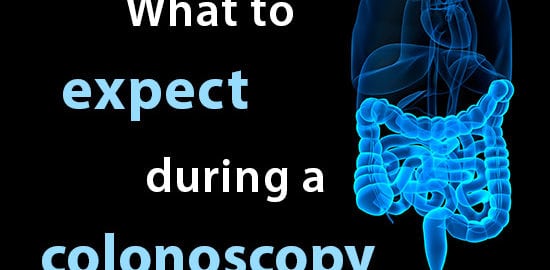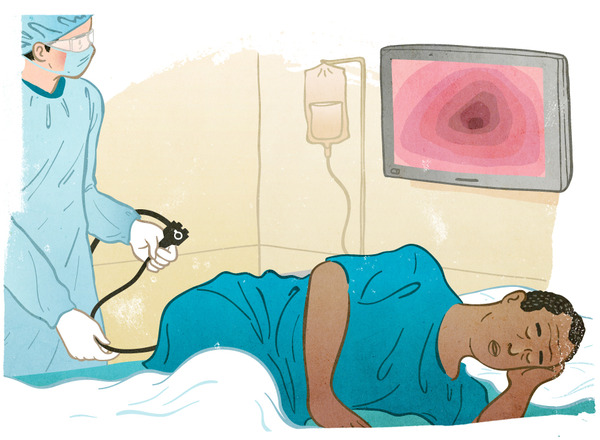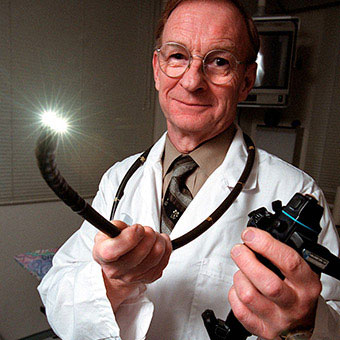The last two posts have highlighted recommended screening examinations for men and women between ages 40-64. In today’s Straight, No Chaser, I want to pay special attention to one examination in particular: the screening colonoscopy, largely because I had the experience of getting it done just yesterday – but more on that later in the post.
Colon cancer is the second most common cause of cancer in the United States after lung cancer (stop smoking!). As previously noted in the post on recommended screenings, everyone should have a screening colonoscopy at least by age 50. Certain groups of individuals, such as African-Americans and those with positive family history for colon cancer should have the test done earlier. Simply put, colonoscopy is definitive in screening and diagnosing colorectal cancer, and it is one of the most successful ways to both prevent and treat early cancer.
Here’s a bit about how a colonoscopy is done.
First, you have to do a bowel prep. Over a few days, you’ll eliminate certain foods (e.g. corn, nuts) from your diet, then progress to an all liquid diet, followed by taking a few doses of a very strong laxative to completely clean out the contents of your intestines (those of you looking for a good detox should be so lucky). I actually lost 3.5 pounds doing this.
The exam involves using a tube (colonoscope) to view your digestive tissue from your rectum all the way up the large intestine (approximately 5 feet). It includes cleaning away and suction stool that blocks the view, direct visualization of the intestines and real-time removal of suspicious tissue (e.g. polyps) that could be cancerous or early signs of cancer. You may or may not choose to be sedated (put to sleep) during this. Of course, my medical curiousity was such that I wanted to see everything on the screen in real time, so I went without any medications, and yes, I lived to tell the story: the level of discomfort never got higher than a 3 on a scale of 1-10.
The point here is simple and straightforward: Most people in whom colon cancer is found and treated early will not only be alive 5 years later, but many will live a normal life span. On the other hand, when it’s not, colorectal cancer is very dangerous because it often doesn’t cause noticeable signs or symptoms until the cancer is advanced and much more difficult to treat. The screening colonoscopy gives you the best chance to know where you stand.
So this isn’t that complicated. If you’re older, African-American, have a positive family history for colon cancer or inflammatory intestinal conditions, live a sedentary lifestyle or have a low-fiber, high-fat diet, you are at risk. A word about your diet: you should know that according to the American Institute for Cancer Research, just 1.7 ounces of processed meats consumed daily (equivalent to less than two strips of bacon) roughly increase a person’s risk for colorectal cancer by 21 percent. More definitely, no amount of processed meat is considered safe for consumption.
Thankfully, my colonoscopy was perfectly normal: I keep telling you diet is 75% of health (unless you’re either lucky or unlucky in your genetic makeup)! The actual colonoscopy took just over 10 minutes, and I won’t have to go through this for another 10 years. Isn’t that investment of time worth giving yourself the best chance for a clean bill of colon and rectal health?
Feel free to ask your SMA expert consultant any questions you may have on this topic.
Order your copy of Dr. Sterling’s new book Behind The Curtain: A Peek at Life from within the ER at jeffreysterlingbooks.com, iTunes, Amazon, Barnes and Nobles and wherever books are sold.
Thanks for liking and following Straight, No Chaser! This public service provides a sample of what http://www.SterlingMedicalAdvice.com (SMA) and 844-SMA-TALK offers. Please share our page with your friends on WordPress, like us on Facebook @ SterlingMedicalAdvice.com and follow us on Twitter at @asksterlingmd.
Copyright © 2016 · Sterling Initiatives, LLC · Powered by WordPress




